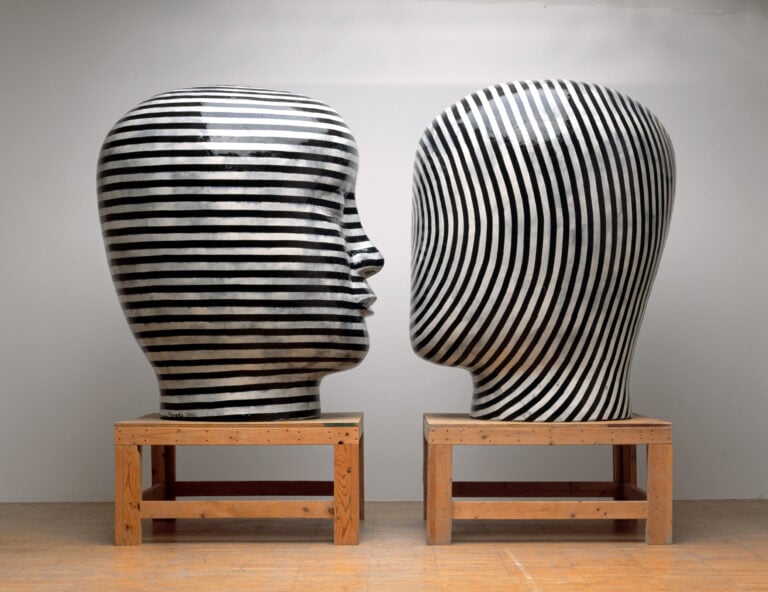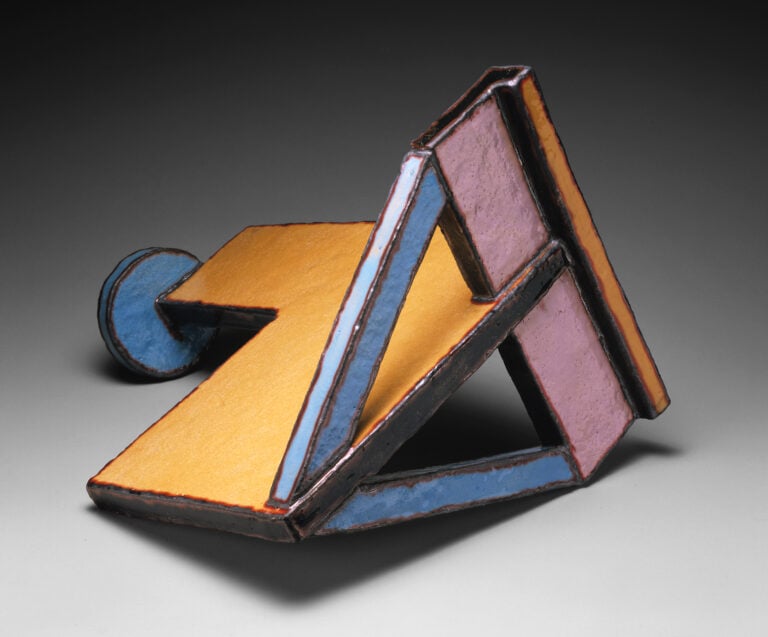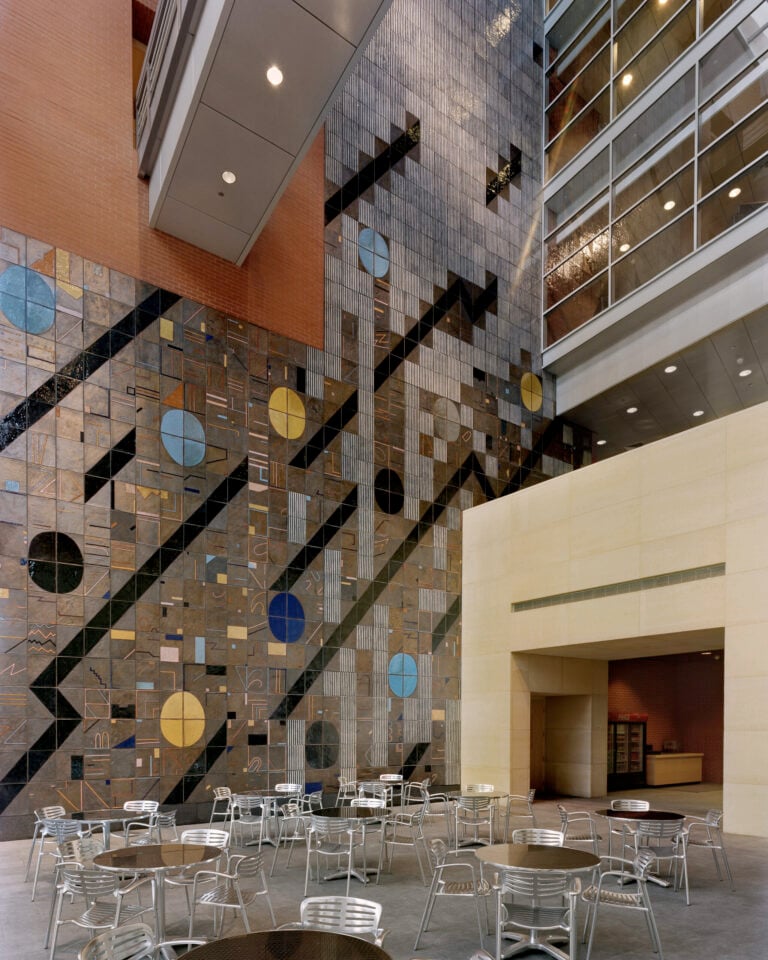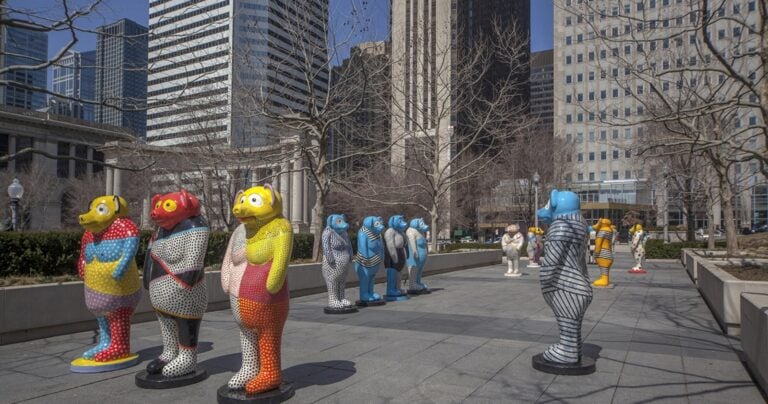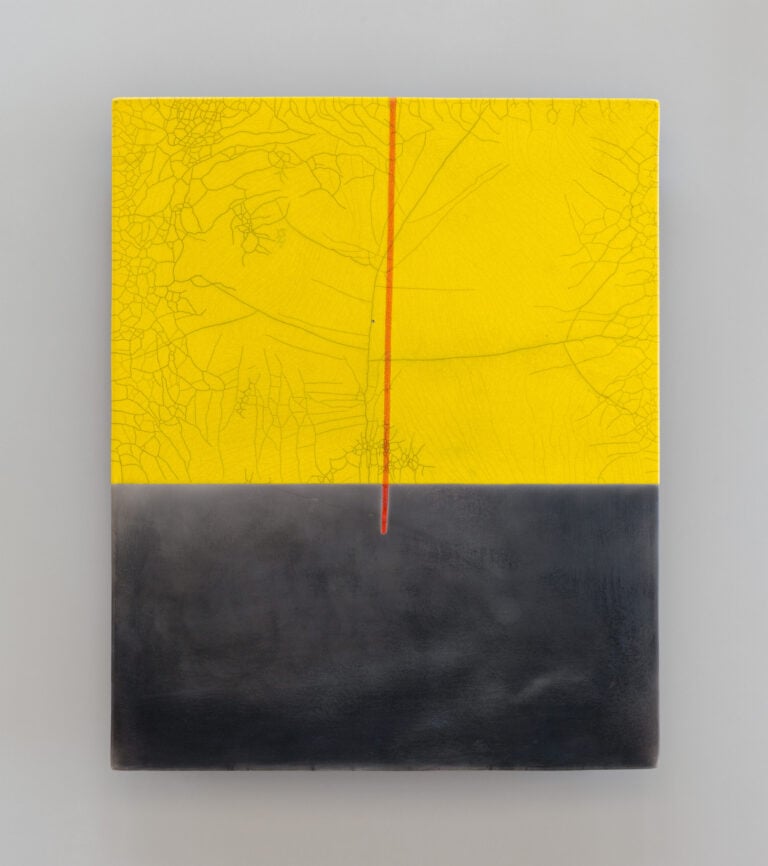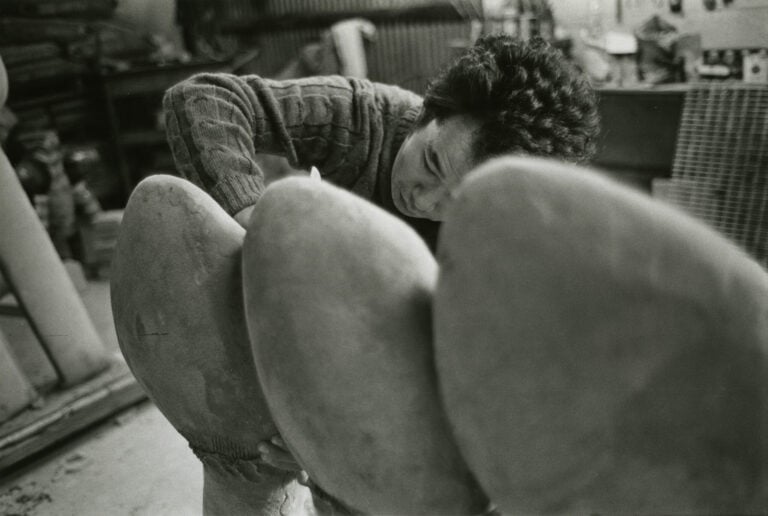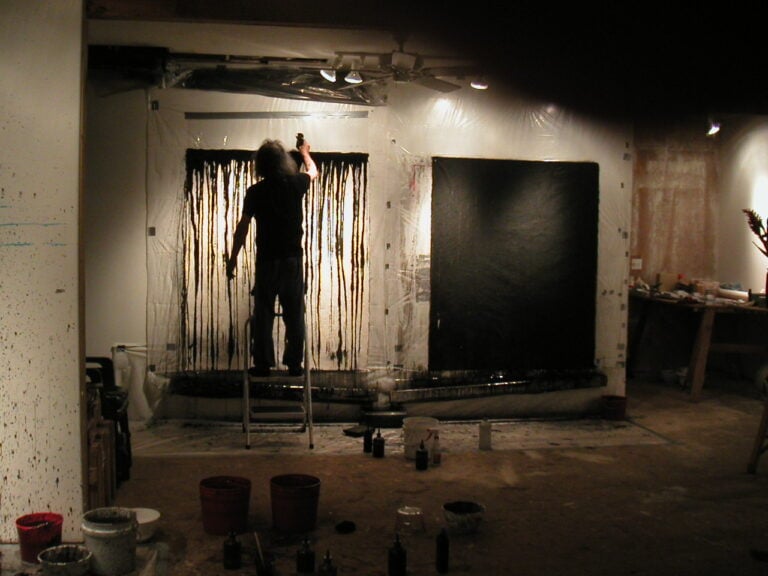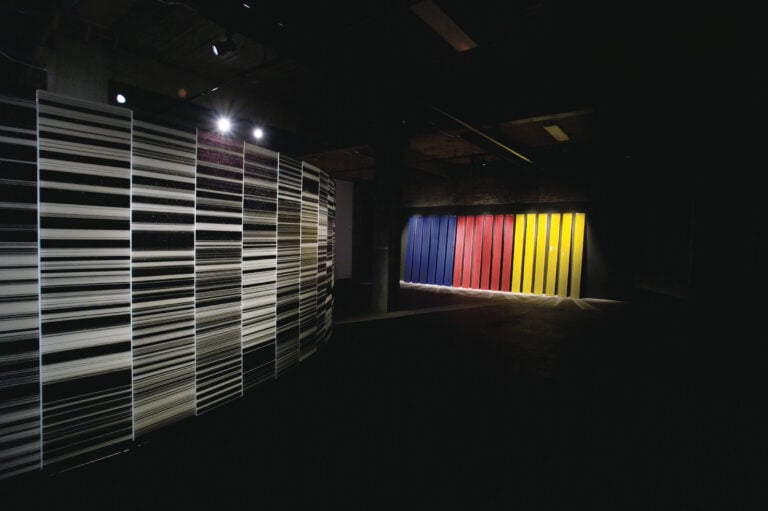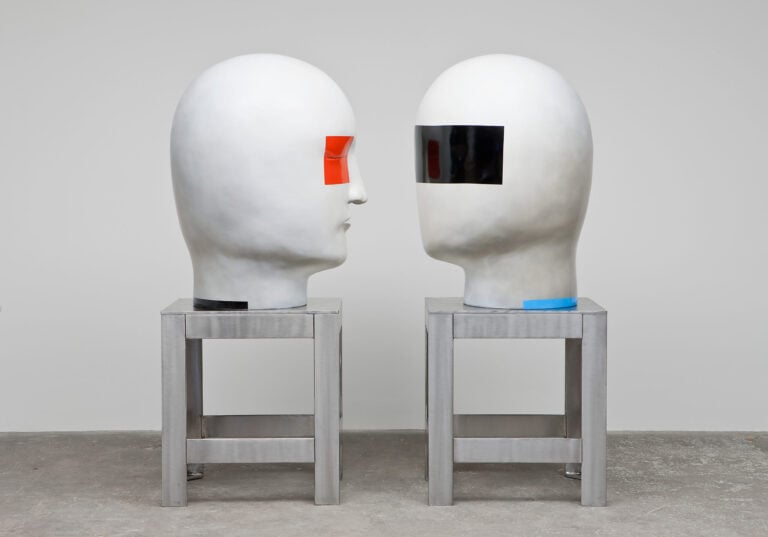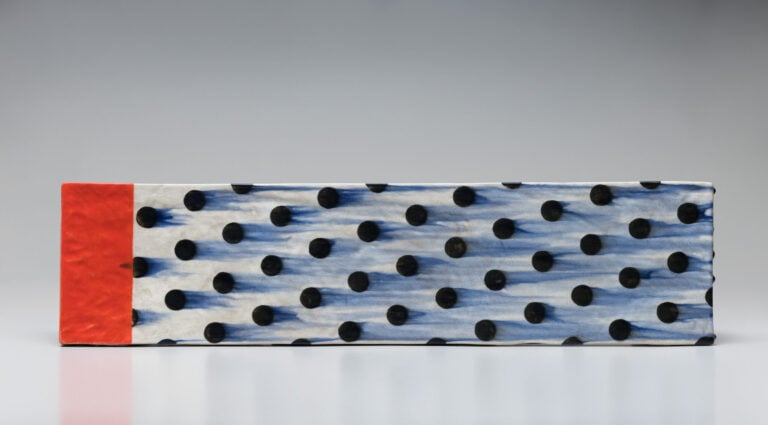Dangos
Kaneko built his first Dangos, named after Japanese dumplings, in 1983 at an industrial kiln in Omaha, Nebraska, provided by the Bemis Center for Contemporary Arts. These hand-built monoliths were…
Heads
Jun Kaneko first thought about experimenting with the human head as a sculptural form quite early in his career, but only began making them in 1993. He has long had…
Densities & Constructions
Kaneko’s abstract sculptures known as Densities, Constructions, and Chunks evolved from his interest in a conscious exploration of spatial relationships. This is reflected in his architectural approach to physical placement…
Wall Slabs & Ovals
Jun Kaneko began creating his Slabs and Ovals in the mid-1980s, when he was teaching at Cranbrook Academy of Art, and over the decades he has produced scores of them….
Murals
Jun Kaneko’s first Wall resulted from his first public art commission in 1986, when he installed an array of colorfully patterned tiles in the Broadway Station of Detroit’s People Mover…
Tanuki
Jun Kaneko’s Tanuki figures are his thoughtful and contemporary interpretation of the Japanese folklore characters. He was initially drawn to creating Tanuki sculptures while visiting Shigaraki, a town which has…
Raku
Though traditional Japanese raku ware dates to the mid-sixteenth century, the Western contemporary use of the word “raku” is a loose appropriation of the term to refer to low-fired pottery….
Magic Flute
Jun Kaneko’s most recent, and most ambitious, opera design came when the San Francisco Opera commissioned him to apply his creative ingenuity to their 2012 production of Mozart’s The Magic…
Fidelio
Following the enormous success of his conceptions for Madama Butterfly, the Opera Company of Philadelphia quickly invited Jun Kaneko to create the scenery and costumes for their 2008 production of…
Madame Butterfly
Jun Kaneko has designed three opera productions, which have each toured throughout the United States. His opera designs are noted for their modernist aesthetic, kinetically animated video projections, and vividly…
Early Works
Jun Kaneko came to the United States in 1963 to study painting. Born in Nagoya, Japan in 1942, Kaneko’s innate artistic talent was recognized at an early age by his…
Works on Paper
From his earliest artistic explorations, drawing has served as an important aspect of Jun Kaneko’s creative process, providing a method for him to investigate compositional complexities, chromatic rhythm, and the…
Paintings
Jun Kaneko arrived in the United States in 1963 as a painter. Though he is today most known for his monumental sculptural achievements, painting has long served as an important…
Glass
Like his work in ceramics, Jun Kaneko’s glass designs explore the dynamic interplay between pattern and space, color and surface, and the complexity of formal composition. They are also a…
Bronze
“My interest is in the creative spark,” says Jun Kaneko. “That’s the idea, the energy, and each idea has the perfect match of material to work with. It can’t always…

